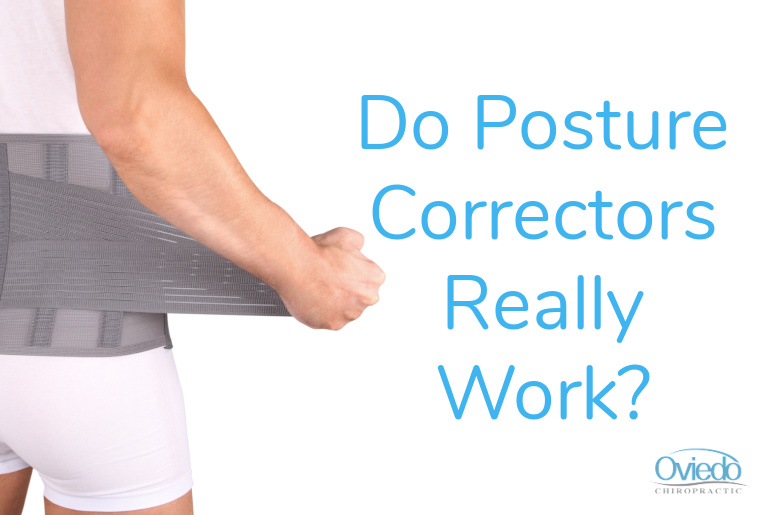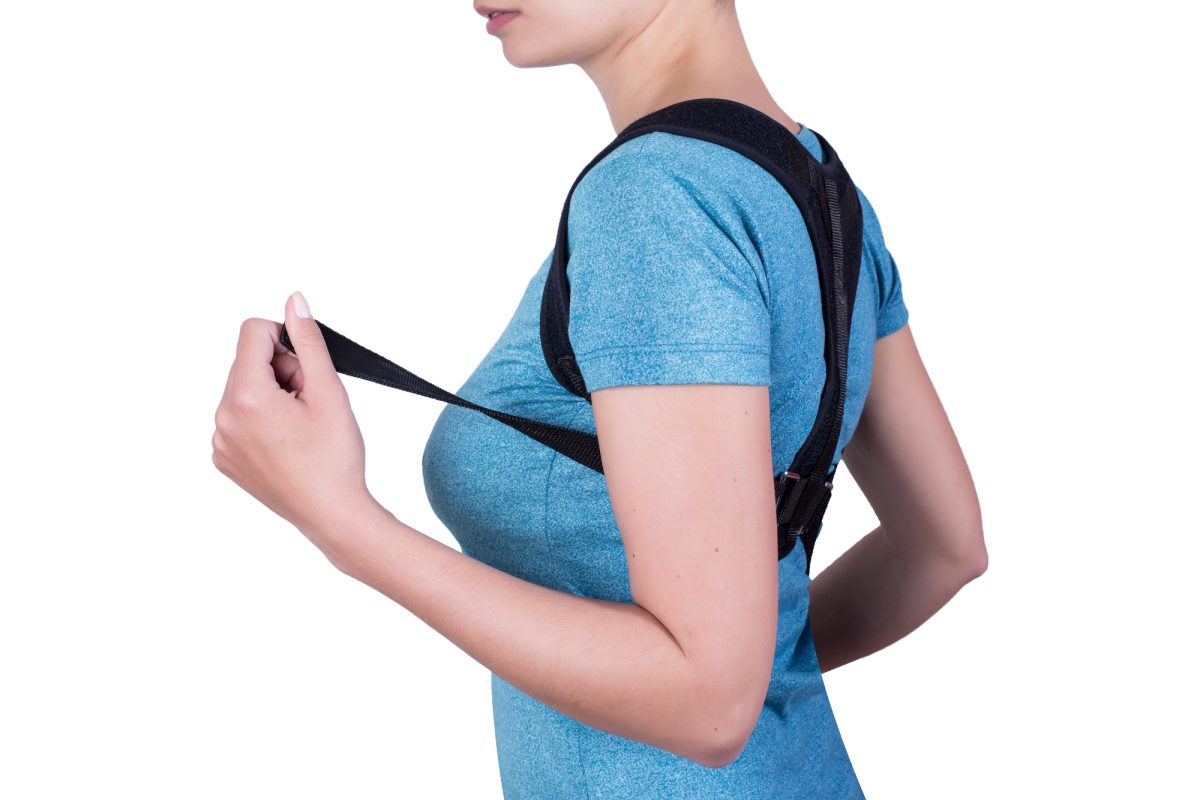Do Posture Correctors Really Work?

We’ve all seen devices that claim to improve your posture.
But do posture correctors really live up to the hype?
We’ve all been told to “sit up straight” by a teacher or parent at some point. And for many of us, using good posture doesn’t come naturally.
Sitting all day while looking down at a mobile device has left most people in a permanent slouch (“text neck” is a real thing!). The good news is that there are plenty of products on the market to act as a reminder to straighten up.
In this article, we’re going to take a closer look at posture correctors and answer the question, “Do they really work?”

We Offer Same-Day Appointments
Why Is Good Posture Important?
While all bodies are different, any human anatomy course will show you that the basic framework (that is, the bones, muscles, tendons, and ligaments) is roughly the same from person to person.
What we call “good posture” is just the neutral positioning of your musculoskeletal system that allows the rest of your body—such as the nerves and organs—to work properly. It also helps our bodies to stay balanced, which prevents fall-related injuries.
When we have bad posture, muscles are stretched that should be relaxed, others are relaxed that should be activated. This can lead to complications such as weakness, pain, and other uncomfortable symptoms.

What Is a Posture Corrector?
A posture corrector is any device designed to correct your posture. Sounds fairly straightforward, but there are a few different types of posture correctors that work in different ways.
Some resemble a wearable harness that physically pulls the muscles into a “good posture” position, while others are electronic devices that will vibrate or beep to remind you to sit up straight.
These devices can also help you from overcorrecting your posture, which can cause more harm than good.

Do Posture Correctors Work?
Whether it’s a harness that pulls your shoulders back or an electronic device that lets you know when you’re slouching, posture correctors can be very helpful at reminding you to sit up straight.
Your body is designed to conserve energy, which means it often takes the path of least resistance. If you remain in the same position for hours on end, day after day, your body will become used to that position. (This is exactly why you have to keep getting chiropractic adjustments!)
In short, we keep returning to the same slouched position because that’s what our bodies are used to.
By holding you in the correct position, your body slowly becomes accustomed to having good posture. With enough time, your muscles will loosen, lengthen, and grow stronger.

How To Use Posture Correctors
As useful as they are, posture correctors are not meant to be worn all day. In addition to being uncomfortable, wearing your posture corrector all day can actually cause your muscles to weaken, as you’re relying on the brace to hold your posture, not your own strength.
Instead, limit use to just about 30 minutes per day and use the rest of your time to practice active good posture. Set up an ergonomic workspace, use good driving posture, and change positions frequently.
You should also find a posture corrector that addresses your specific posture problems. If you have a swayback, for example, a device that pulls your shoulders back may not alleviate your lower back pain.
If you’re not sure, your chiropractor can help you identify issues with your posture and even recommend a corrector that’s right for you.
Conclusion
Posture correctors are a great way to help improve your “muscle memory” so you can have better posture long-term. However, the best thing you can do to improve your spinal health is regular chiropractic adjustments.
Posture correcting devices are a lot like training wheels—they’re only as good as the existing framework. Chiropractic adjustments make sure that your body’s framework (that is, your joints and soft tissues) is capable of good posture.
At Oviedo Chiropractic, we are well-versed in a wide variety of conditions that can lead to bad posture, as well as the techniques for reversing the damage and restoring you to good health.

